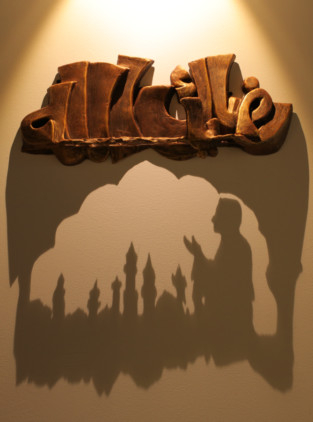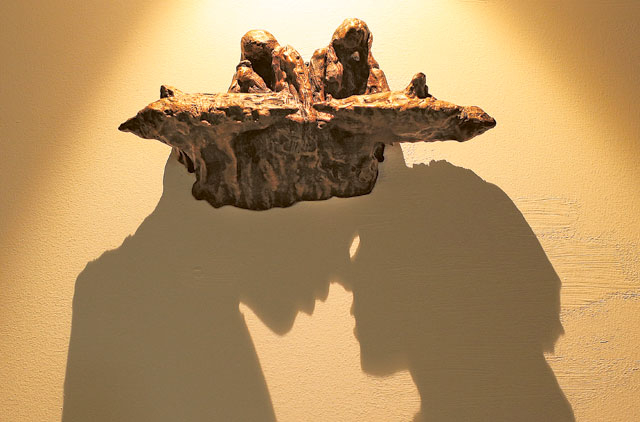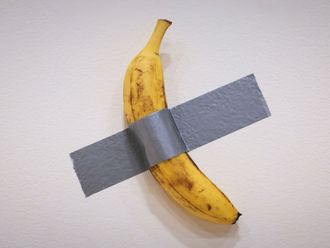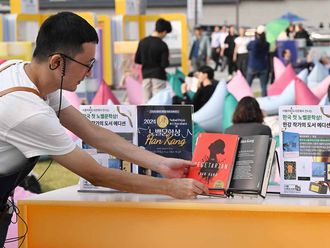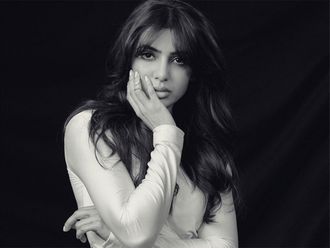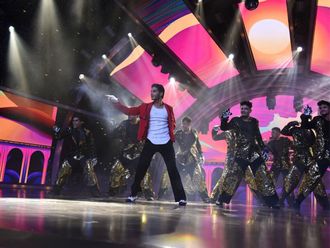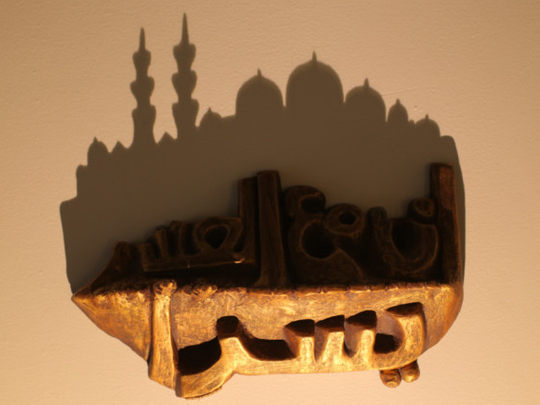
The calligraphic sculptures created by Bassam Al Selawi and Maysoon Masalha look deceptively simple. But when the lights in the gallery are dimmed and the spotlights switched on, a surprising fourth dimension is revealed. The shadow cast by each wall-mounted sculpture is a figure or words related to the feelings evoked, or the mental images conjured by the words on the sculpture itself. The latest show by the Jordanian couple, “Don’t Trust Your Eyes” includes shadow sculptures featuring verses from the Quran and poetic phrases, with the shadows sometimes illustrating the emotions embodied by the words, and sometimes telling quite another story. The exhibition also includes a new set of shadow portraits produced in collaboration by the artists.
Al Selawi and Masalha graduated in fine arts from Yarmook University in Jordan. After teaching for many years at United Nations Schools for Palestinian refugees, the couple moved to Abu Dhabi in 2012, where they work at The Art Hub. “We have been working with calligraphy for many years, but two years ago we started experimenting with combining calligraphy with shadow art. We have tried to develop a unique style by using new materials and techniques. We like this form of art because it gives us plenty of scope to express our creativity, and allows us to introduce a figurative element in our work while staying true to our cultural traditions. We have recently created commissioned pieces for a mosque in Dubai, and that has encouraged us to experiment further with this art form and create new and innovative shadow artworks,” Al Selawi says.
The sculptures are made from resin and are available as limited edition pieces. “The most difficult part is to come up with an idea of what the words and shadow should convey. We begin with a lot of sketches and then make a clay model. A mould is then made for the final casting with resin. We chose resin because it is easy to handle and not very expensive. Although we make several limited edition pieces from each mould, each piece has to be finished by hand to correct details that are lost during casting. This is a delicate process because the minutest mistake in the notches and curves gets magnified in the shadow,” Masalha says.
Al Selawi reveals his romantic side in many of his pieces. In one sculpture, the shadow of a lonely man pining for his beloved appears beneath the words “Time seems to crawl when you miss the one you love”. And in another moving piece titled, “Never Apart” a man and a woman are seen sitting with their backs to each other looking sad, angry and emotionally distant. But in the shadow they appear very close and very much in love. “Even though they may have had a disagreement, the shadow reveals that deep in their souls they still love one another,” the artist says. But his personal favourite is a piece where the shadow of a man playing the saxophone appears under a calligraphic sculpture with the words “Under the shadow of your love I played melodies”. “I created this especially for Maysoon,” he says.
On the other hand, Masalha’s sculptures are mostly based on spiritual themes, where the message of various verses from the Quran is reflected in shadows depicting mosques, minarets, hands joined in prayer or a figure reading the holy book. She has also created a piece featuring the silhouette of the Sheikh Zayed Mosque in Abu Dhabi. But in a piece titled, “Love. Dream. Freedom”, the symbolic figure of a horse in the shadow poignantly reveals the innermost desire of a woman for love and freedom.
Both artists have created pieces featuring different names of god in the sculpture and in the shadow created by it. And both have conveyed their love for their homeland through pieces about historic places in Jordan such as “Petra” and “Wadi Rum” that cast shadows evoking camels and bedouins in the desert.
The artists are also exhibiting a series of collaborative works created with a variety of different materials and techniques. A work titled “Between the Lines” looks like a blank white canvas with pieces of foam board forming lines of different colours running across it. But under the spotlight, it is transformed into the portrait of a woman formed by the shadows of the precisely cut foam pieces. “Art is a shadow of what a person is thinking. It is a small glimpse of the little secrets, joys and regrets they hold inside. Every line has its own meaning,” Masalha says.
Similarly, “The Laugh” is a portrait of a smiling woman, created by the shadows of rows of screws, hammered into a board to precisely calculated depths. In another work the artists have created a shadow portrait of Ahmad Al Yafei, founder of The Art Hub with pieces of foam board and folds of scrapbook paper.
“The challenge for every artist is to create new, innovative and distinct work that appeals to the widest possible audience. We have tried to create works that combine sculpture and painting, light and shadow and fantasy and reality. And we can also create customised sculptures and portraits for those who want personalised pieces in our unique style,” Al Selawi says.
“Don’t Trust Your Eyes” will run at Baginskaya Gallery and Studio, JLT until August 17.


